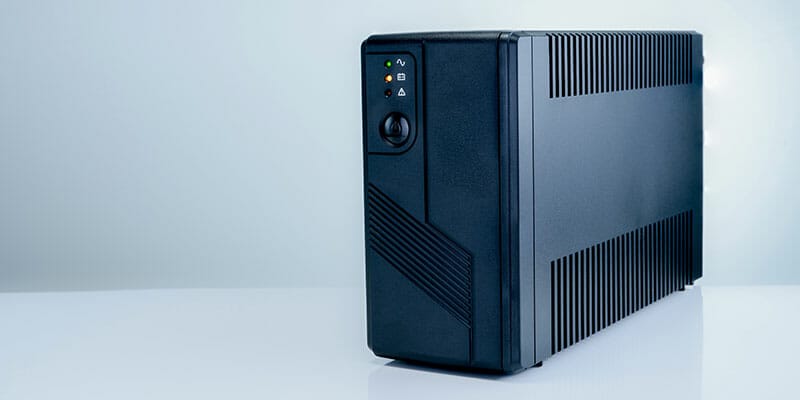- Home
- About us
- Products
- Dealer Enquiry
- Contact Us
- 044 -2486 1994
- +91 99623 98222
- sales@nantech.in
- REQUEST A QUOTE

Many of us depend on computers to perform our jobs, education, businesses, and finances. So, power outages can have serious consequences. We risk losing information, failing to complete necessary transactions, and being accidentally removed from critical meetings if power outages happen unexpectedly. Uninterruptible power supplies, or UPSs, have become increasingly popular as it helps us overcome all the difficulties mentioned above. Recognising the importance of dependable power backup solutions, businesses and individuals are reaching out to companies such as Nantech Power Systems for our expertise in delivering high-quality delta UPS systems.
Power fluctuations can pose significant dangers to your electronic devices and computer in the modern world. To protect against these fluctuations and avoid potential damage, backup power supplies, also known as UPSs, are constructed to stabilise the power supply. Different UPS designs offer varying degrees of protection against disturbances such as power surges, noise interference, overvoltage, undervoltage, power decline, and power outages.
Manufacturers have devised a variety of UPS systems, including line-interactive, double/online conversion, and offline/standby configurations, to address these issues. This discussion will concentrate on online and line-interactive UPS layouts, comparing and contrasting them to assist you in selecting the optimal solution for your specific requirements. First, we'll discuss online and line-interactive UPS here.
Line-interactive UPS
A line-interactive UPS maintains the inverter's connection to the electrical grid. In the event of a power disruption, it switches the DC route from the battery through its normal charging mode to its emergency power supply mode. This ingenious setup permanently links the UPS's output to the battery-powered AC inverter. The UPS inverter goes into battery charging mode when the source of input for AC power is stable. When the mains supply goes out, the UPS's transfer switch opens, allowing the battery to provide the device's output. Since an inverter is always wired to the output, it provides additional filtering and results in fewer switching transients.
Pros of a line-interactive UPS include:
Negative features are:
Double/online conversion UPS
A double-conversion UPS, as the name suggests, does two power conversions: The primary source's Alternating Current (AC) is converted into Direct Current (DC) and stabilized before being supplied into an inverter, which turns the DC back into Alternating Current (AC). In the event of a mains power failure, the UPS will switch to battery power without human intervention. Since the inverter has already been activated, power is transferred to the battery instantly. The double-conversion process reduces power disturbances from the mains, such as harmonics and waveform distortions. Thus, online UPSs offer the highest level of safety for IT hardware.
The advantages of a double/online UPS are:
The cons include:
All varieties of UPS systems were created to safeguard hardware and electronic devices in the event of an unanticipated power outage. However, their true potential varies because of differences in their underlying operating principles. Online and line-interactive UPS, provide the same level of protection but in different ways:
Noise/surge filtering
To protect electronics from being harmed by lightning, electromagnetic (EMI/RFI) line noise, and power surges, all UPS systems have surge suppression and line noise filtering features. In particular, the double-conversion functioning of the online UPS unit provides enhanced protection by isolating equipment from facing issues with the alternating current.
Voltage regulation
Line-interactive UPS can automatically regulate voltage if it falls outside of predetermined ranges. An online UPS achieves greater precision in voltage regulation due to its double-conversion process.
Time required for battery transfer
To ensure the uninterrupted operation of even the most power-sensitive devices, line-interactive UPS systems make the transition to battery power in 2 to 4 milliseconds. Since the inverter will already be powering the linked equipment load in the event of a power failure, there is no transfer time with an online UPS system.
Departmental servers, households, SMBs, and MSMEs can all benefit from a line-interactive UPS that provides the high-power reliability they require. These devices use a unique set of operating principles and can be widely used in set-ups ranging from private residences to massive data centers. They require charging the battery either once or twice a day. But, they may require frequent charging in places with poor infrastructure where the alternating current line is unstable, varies dramatically, or is greatly distorted.
The best online UPS system isn't just useful in industries like computing, transportation, securities, banking, medicine, and communications where continuous power is required; it's also the go-to option for providing backup power to essential equipment and servers in data centers. They are particularly used in intensive care units that have very important life-saving medical equipment.
The bottomline
Different types of UPS solutions offer varying degrees of security, so knowing which one you're using is crucial. Because of their fundamentally different designs, online and line-interactive UPS offer different features, functions, benefits, and limits. Furthermore, a UPS's internal architecture affects its performance in a variety of contexts. If you want to get the best UPS, reach out to Nantech Power Systems, one of the leading delta UPS dealers in Chennai. Get in touch with us to know more!
Are We An Electricity-Surplus Nation?
Emerson UPS Preventive Maintenance Checklist – Get To It!
Safety First
Emerson (Vertiv) UPS
UPS Inverter In Chennai – Understanding The Variations
Replace a UPS Battery or Buy a New UPS System?
A Closer Look at Solar Inverter vs Normal Inverter